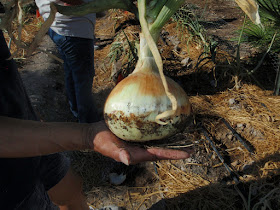Q. I'd like to trim my
hawthorns because they are too tall. If I do that now in October, will I be
removing the blooms that emerge in the spring?
A. General rule of thumb is if a plant blooms in early
spring (January, February, March and even April) then its flower buds developed
during the previous late summer and fall months. Pruning with a hedge shears,
or cutting off all the new growth with a hand shears, removes flower buds as
well as the spring flower show. Think photinia and pyracantha.
 |
| Photinia showing its red leaves and flowers in the spring |
If it blooms during the summer, then it produces flowers
on its new growth. In this case, winter pruning will not remove the flower show.
But summer pruning does. Think oleander.
The key to whether you get a spring flower show is really
more about HOW the pruning is done. Trees or shrubs that bloom in the early
spring, if pruned correctly during the winter, will still provide a flower
show.
 |
| Pyracantha blooms in the spring |
 |
| If pyracantha is pruned correctly we will get these red berries for fall and winter color. |
Pruning with a hedge shears, unless the plant is part of a
hedge, is never the right way to prune. When pruning shrubs, choose between two
different techniques: renewal pruning or rejuvenation pruning.
Renewal pruning is what is done to Lantana. It is cut to
the ground, leaving one or 2 inches sticking above the soil to provide for new
growth. This type of pruning is done to overgrown, woody oleanders and many
other overgrown shrubs.
 |
| Lantana is pruned to the ground every year, renewal pruning, because it will die back in the winter in cold climates |
Rejuvenation pruning is selectively cutting 2 to 4 of the
older stems, close to the ground, every 3 to 4 years. This is done to plants
that don’t grow back as quickly as Lantana or oleander.
 |
| Look at the base of the shrub. Several older stems were cut to the ground leaving others. This is rejuvenation pruning. |
Rejuvenation pruning selectively removes a few of the
oldest stems to make way for younger growth which grows from the base. This
pruning technique always leaves a floral display, regardless of the plant and
when it blooms.
Prune hawthorns now and you will not interfere with the
spring floral display if you use rejuvenation pruning. Pick 3 to 4 of your
tallest stems and prune them back to within a few inches of the ground.





















